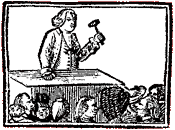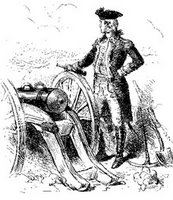Ode on the New Year 1766
Eighteenth-century America had a tradition at the turn of each year for printers’ apprentices and other young employees to print up and distribute verses for all the newspapers’ customers. I shared an example from 1771 a year ago.
The even worse verse below appeared from the boys of the Boston Evening-Post as 1765 turned into 1766. According to the Stamp Act enacted earlier that year, all newspapers, as well as legal filings and many other documents, had to appear on stamped paper, with a small tax going to the imperial government. But there had been such an outcry in British North America, from Halifax down to Savannah, that hardly any stamped paper was actually being used. The example above, from an exhibit at the Herbert Hoover Presidential Library, is one of the rare surviving examples.
As the boys of the Evening-Post made clear, their New Year’s broadside certainly wasn’t on stamped paper.
Vox PopuliThat last line is a subtle request for a tip.
Liberty, Property
and No Stamps
The News-Boy
Who carries the Boston Evening-Post, with the greatest Submission begs Leave to present the following Lines to the Gentlemen and Ladies to whom he carries the NEWS.
ODE on the New Year.
What Time bears on his rapid Wing,
And of the doubtful Year I sing.
Say Monarch! why thy furrow’d brow
Frowns from thy Chariot on us now?
Thy Wheels, which sometimes seem’d to glide,
In smoother Current than the Tide,
Now lumber heavy as my Verse:
Why com’st thou to us in a Hearse?
As thy approach, when GEORGE first reign’d,
Fair Freedom wanton’d in thy Train:
I saw her move in graceful Dance,
One Foot on Spain and one on France.
But now she droops, deform’d with Fear;
From her dim Eye-ball starts the Tear.
Whence, too, that grisly Form that bears
Bonds made for Innocents to wear?
Will British Steel in GEORGE’s Reign,
Bend for to form a Subject’s Chain?
Avert it—————————
Methinks a mighty Hand I see,
That grasps thy Rein and governs thee.
Him, as in silent Pomp he rides,
No Pencil paints, no Pen describes:
An awful Veil his Body shrouds;
His Head lies hid in Golden Clouds.
When Captives long have groan’d in vain,
His single touch dissolves their Chain.
He over King and Senate rules;
Oppressors, sometimes, are his Tools.
Hail, KING supreme! thy mighty Hand,
Has, more than once, reliev’d this Land;
Descend, and bless the coming Year;
And humble Hope shall banish Fear.
Therefore—————
Ye Months foredoom’d to form th’ ensuing Year,
With ev’ry happy Omen fraught appear:
Each Week, Day, Hour, in all the annual road.
With ev’ry prosperous Event be crown’d;
Nor let one swiftly flying Minute move,
That shan’t New-England’s happiness improve:
Oppressive SCHEMES let Disappointment brand,
Nor let one Tyrant in the Senate stand:
Let Study and Experience make us wise;
And as our Years extend, our Virtues rise:
Let Reason’s Light gild Life’s extremest gloom,
And Virtue’s Lamp attend us to the Tomb;
And the Memorial that we leave behind,
To us be glorious—useful to Mankind.
Thus does the Carrier of your NEWS appear,
To wish you in the New, a happy Year!
Time swiftly flying, hurl’d the Year away,
And once a Week produc’d his running Day,
And whether wet or cold, his Task he still maintains,
(In spite of Stamps) In hopes you’ll now reward him for his Pains.




